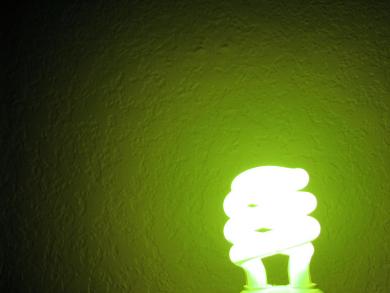Bright Ideas for Dark Days this Winter: CFLs and LEDs

Winter is here, which means the sun is out for less time and the lights in your home start putting in some longer hours. Take a look at your lightbulbs around the house and make sure that you are using energy-efficient options like CFLs and LEDs. Energy-efficient bulbs are a great way to save energy, reduce your carbon footprint and help save the environment. Did I mention it’s pretty easy too?
The New Normal
Incandescent light bulbs that are inefficient are being phased out in the US since the Energy Independence Security Act of 2007. More energy-efficient solutions have become widely available and are great options for lighting in your home. These bulbs have a much longer life span than standard incandescent bulbs and use a fraction of the energy. Compare facts about bulb types to see which option is best for you and keep in mind that the purchase price is a little more, they last significantly longer which ends up saving you money longterm.
Why CFLs?
Compact Fluorescent (CFL) Bulbs use up to 75% less energy and last up to 10x longer than incandescent bulbs. Because they contain a small amount of mercury, they can’t be placed in the garbage or recycling bin, but they can be recycled at many locations including county household hazardous waste drop-off sites and retail store “take back” programs. The mercury will only escape if the bulbs are broken, so store and transport them carefully.
Broken CFLs
If you break a fluorescent bulb, don’t just rush into cleaning it up since you could be exposed to mercury. The United States Environmental Protection Agency has a great guide for cleaning up CFLs to ensure that you, your family, and your home stay safe and that the affected area is treated quickly.
Why LEDs?
LED or light-emitting diode bulbs use 25% of the energy and last up to 25x longer than traditional incandescent bulbs. That is up to 50,000 hours of light! LED bulbs remain cool and give off less heat which is not only more energy efficient, but a lot safer too. LEDs don’t contain any hazardous material and can be placed in the garbage when they burnt out.
Shedding Light on Energy-Efficient Bulbs
LED and CFL bulbs provide many benefits when used in your home. Seek out the best option by doing some comparisons on everything from lifespan, watts per bulb and cost per bulb. According to the Minnesota Pollution Control Agency, lighting accounts for close to 20% of the average home’s electric bill. Switching to LED or CFL bulbs is a great way to save money.
